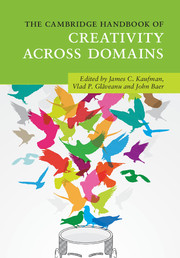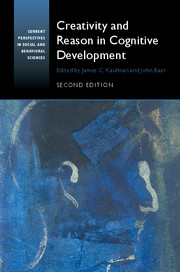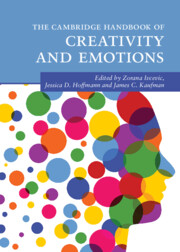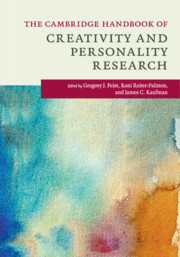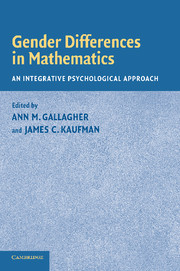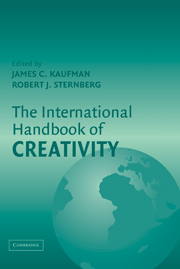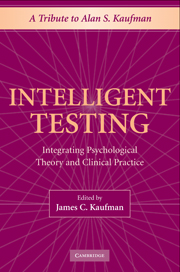The Cambridge Handbook of Creativity across Domains
Creativity is of rising interest to scholars and laypeople alike. Creativity in the arts, however, is very different from creativity in science, business, sports, cooking, or teaching. This book brings together top experts in the field from around the world to discuss creativity across many different domains. Each chapter includes clear definitions, intriguing research, potential measures, and suggestions for development or future directions. After a broad discussion of creativity across different domains, subsequent chapters look deeper into those individual domains (traditional arts, sciences, business, newer domains, and everyday life) to explore how creativity varies when expressed in different ways. Ultimately, the book offers a future-looking perspective integrating the different variations of creativity across domains.
- Offers the most expansive and complete coverage of creativity research in different domains to date
- Presents a large assemblage of both established experts and rising stars across multiple disciplines and cultures
- The focus on theories, assessment, and empirical studies enables readers to relate the content to their specific area of interest
Reviews & endorsements
'… The Cambridge Handbook of Creativity across Domains is a useful counterweight to the reductionist 'underbelly' tendencies of a neuroscience approach to creativity. The intellectual enterprise of achieving a thorough understanding of the nature of creativity would do well to keep both aspects in mind as we all proceed.' Aaron Kozbelt, Evolutionary Studies in Imaginative Culture
Product details
September 2017Paperback
9781107526662
682 pages
255 × 179 × 30 mm
1.39kg
Available
Table of Contents
- Part I. Creativity and Domains:
- 1. Creativity across different domains: an expansive approach James C. Kaufman, Vlad Glăveanu and John Baer
- 2. The amusement park theoretical model of creativity: an attempt to bridge the domain specificity/generality gap John Baer and James C. Kaufman
- 3. Mix and match: opportunities, conditions, and limitations of cross-domain creativity Joanna Szen-Ziemiańska, Izabela Lebuda and Maciej Karwowski
- 4. Domain-general creativity: on generating original, useful, and surprising combinations Dean Keith Simonton
- Part II. Creativity in the Traditional Arts:
- 5. The creativity of literary writing Keith Oatley and Maja Djikic
- 6. Creativity in the visual arts Matthew Pelowski, Helmut Leder and Pablo Tinio
- 7. The creation and aesthetic appreciation of architecture Oshin Vartanian
- 8. Photography and creativity Joanna Serafin and Stephen J. Dollinger
- 9. The constricted muse: acting Thalia R. Goldstein and Anne G. Levy
- 10. Musical creativity Aaron Kozbelt
- 11. Dance Paula Thomson
- Part III. Creativity in the Sciences:
- 12. Creativity in the physical sciences Gregory J. Feist
- 13. Biomedicine, creativity, and the story of AIDS Mei Tan and Elena L. Grigorenko
- 14. Creativity in psychology: finding its niche in the sciences Dean Keith Simonton
- 15. Creativity in the engineering domain David H. Cropley, Arthur J. Cropley and Bree L. Sandwith
- 16. Creativity in the domain of mathematics Ugur Sak, Ülkü Ayvaz, Bilge Bal-Sezerel and N. Nazlı Özdemir
- 17. Creativity in computer science Paul Joseph Barnett and Ralf Romeike
- Part IV. Creativity in Business:
- 18. Advertising - generating creative ideas in a complex environment Mark Kilgour
- 19. Marketing Marie Taillard and Benjamin G. Voyer
- 20. Creative leadership: how problem solving, decision making and organizational context influence leadership creativity Kevin Mitchell and Roni Reiter-Palmon
- 21. Creativity in educational technologies Kylie Peppler
- 22. Creativity in design Nathalie Bonnardel and Carole Bouchard
- 23. A minimalist model for measuring entrepreneurial creativity Elias Carayannis and Phillip Harvard
- Part V. Newer Domains for Creativity Research:
- 24. Intellectual property: does the law influence creativity? Gregory N. Mandel
- 25. Gastronomy and culinary creativity Jeou-Shyan Horng and Lin Lin
- 26. Tactical creativity in sport Daniel Memmert
- 27. Creativity in non-human animals Allison B. Kaufman and William J. O'Hearn
- 28. Violent innovation: creativity in the domain of terrorism Gina Scott Ligon, Karyn Sporer and Douglas C. Derrick
- Part VI. Creativity in Everyday Life:
- 29. Creativity in the domain of emotions Zorana Ivcevic, Marina Ebert, Jessica D. Hoffmann and Marc A. Brackett
- 30. Creativity in teaching Ronald A. Beghetto
- 31. Culture and creativity Rodica Ioana Damian and Reese Tou
- 32. The benefits of creativity in therapy: current evidence and future directions Marie J. C. Forgeard and Jeanette G. Elstein
- 33. Creativity in the domain of play: product and processes Sandra Russ and Claire Wallace
- 34. Creativity in craft Vlad Glăveanu
- Part VI. Conclusion:
- 35. Taking a prospective look at creativity domains Molly Holinger, Vlad Glăveanu, James C. Kaufman and John Baer.

